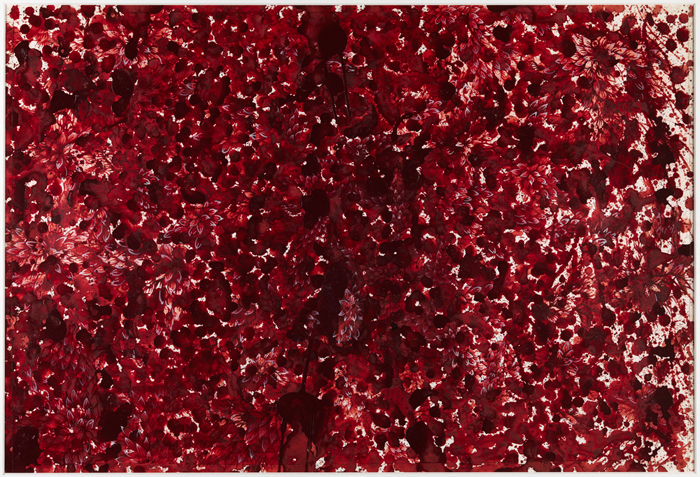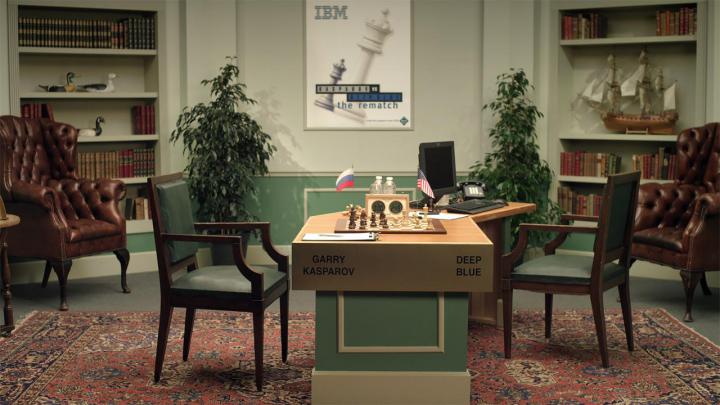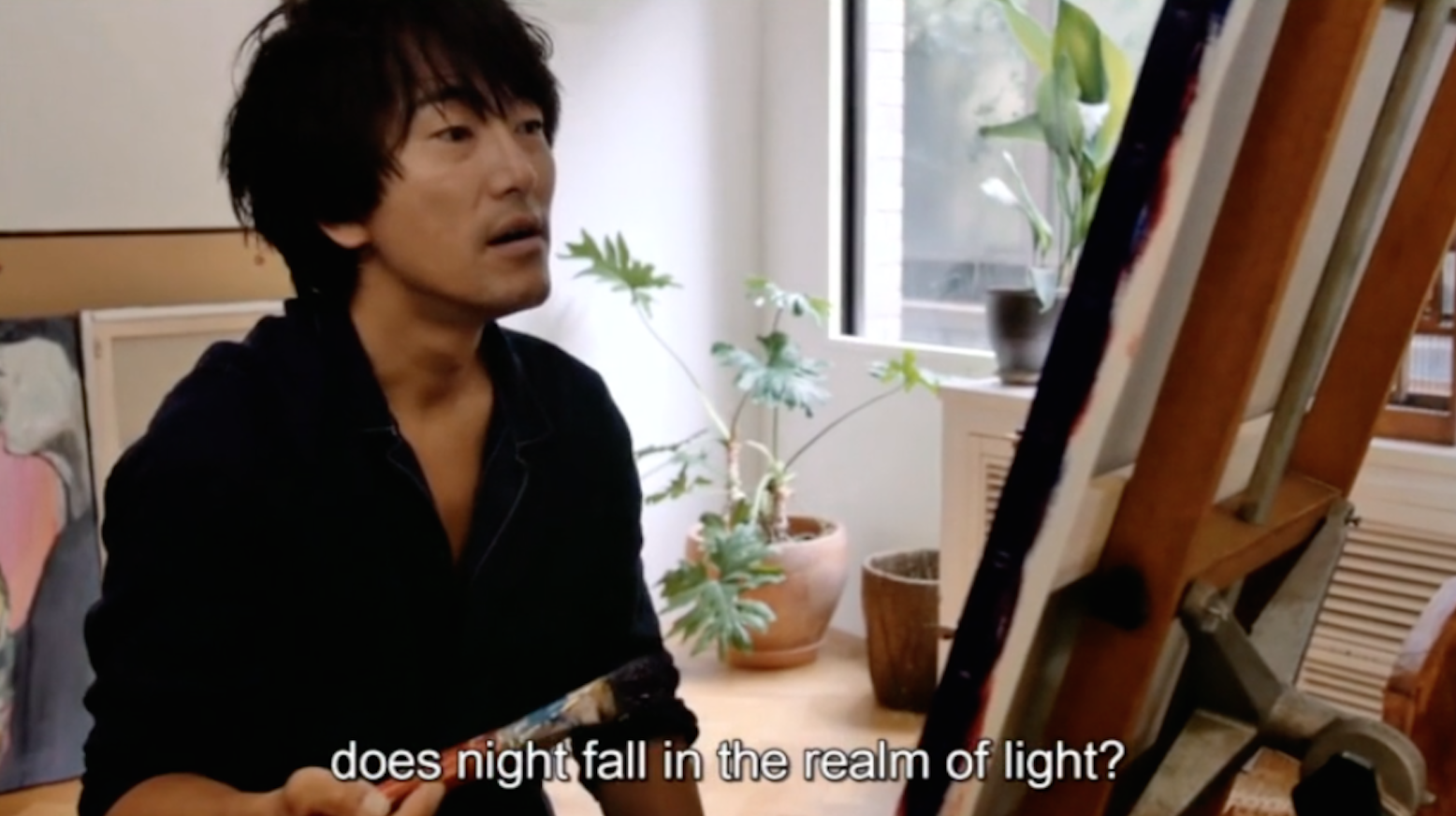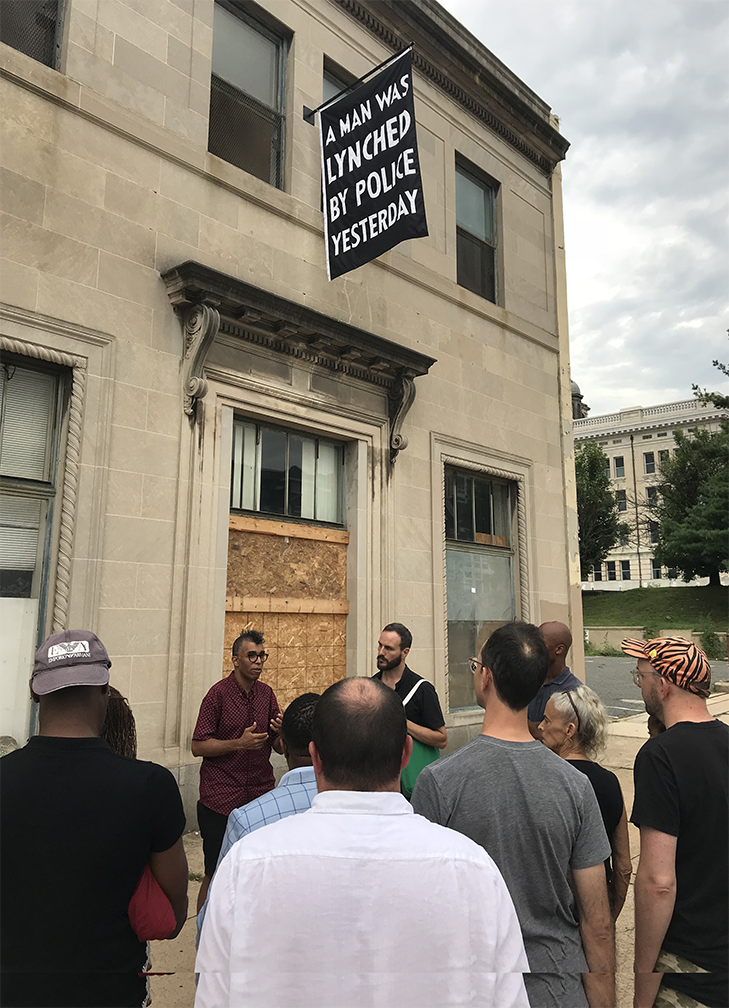
© » KADIST
Piotr Szyhalski
Drawing & Print (Drawing & Print)
The series of ink drawings and hand-lettered texts, titled COVID-19: Labor Camp Reports , were made and posted daily by artist Piotr Szyhalski on the @LaborCamp Instagram account, capturing the politically fraught Trump era and looking directly at some of the most painful aspects of life during COVID-19. Accompanied by poignant captions written or chosen by the artist, this ongoing series, running for more than 100 days and still counting, operates as both a witness to the global health crisis and a record of the unprecedented moment experienced collectively. In the dozens of drawings, Szyhalski draws upon his personal collection of historical material, citing the compositions and graphic style of war-time politprop, religious pamphlets, military recruitment posters, and other forms of state and anti-state propaganda.

© » KADIST
Fabien Giraud & Raphael Siboni
– In whiche a lemyng starre returneth in the yeer foretolde and alle thing that spak to us turneth ayeyn to silence – Sixth episode of The Unmanned and sharing the same camera movements as the episode “1997 – The Brute Force”, “Mil troi cens quarante huyt” refers to the appearance of a comet in 1759 – thus validating the computation and rational prediction of its return by the British astronomer and mathematician Edmond Halley. The action of the film goes back four centuries earlier, in 1348, and unfolds around one unique scene: the escape and the death of a bishop and his court in a forest during the first major outbreak of the Black Plague which was said at the time to be born in the hair of comets.

© » KADIST
Fredi Casco
Drawing & Print (Drawing & Print)
Pascua Dolorosa (Painful Easter) by Fredi Casco is a series of drawings made on old worksheets documenting land surfaces in Caapucú, a forest exploitation area where one of the most violent episodes of the repression of Stroessner’s dictatorship took place in 1976, and during which peasants accused of belonging to insurgent movements were kidnapped, tortured and many of them killed. In 2009, human bone remains were found in the Caapucú region during ground measurement work. These works reveal the tension between a cold and positivistic approach to landscape as put on record in the legal papers, the poignant use of violence as inscribed into the land, and a ghostly invocation of the power of resistance.

© » KADIST
Eusebio Siosi
Jepira is a mythical and essential place of the spiritual dimension for the Wayuu people. It is the starting point and final resting place in their transcendence process which is part of the territory and not dissociated from it, such as in the Catholic notion of Heaven. Today, the Pilon de Azúcar hill which corresponds with Jepira is part of their reclaimed land and connects this dessert culture to the sea; it is the place the Wayuu go when they need to speak with the dead which, along with dreams, is the main way to access spiritual knowledge.

© » KADIST
Yang Song
Yang Song’s Die features a clay mask of the artist himself slowly dissolving into water. Clay returns to clay. Clay originates from and returns to earth, becoming a metaphor for life.

© » KADIST
Reza Aramesh
The photographed plaster heads set against the idyllic landscapes of the south of England, subvert the process of image production and memory. Based on photographic sources from journalism, they have preserved a ‘memento mori’ in the intimate form of a sculpture, yet derived from a source which is not only public but also voyeuristic. They have been entirely dislocated from their original context, and transferred to the realm of photography again, into fragile silver gelatin prints.

© » KADIST
Reza Aramesh
The photographed plaster heads set against the idyllic landscapes of the south of England, subvert the process of image production and memory. Based on photographic sources from journalism, they have preserved a ‘memento mori’ in the intimate form of a sculpture, yet derived from a source which is not only public but also voyeuristic. They have been entirely dislocated from their original context, and transferred to the realm of photography again, into fragile silver gelatin prints.
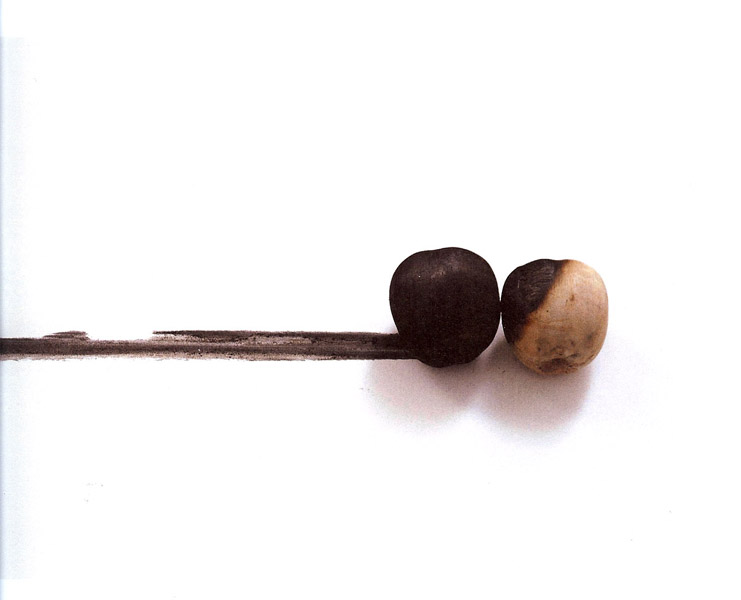
© » KADIST
Michel François
Drawing & Print (Drawing & Print)
In Michel François’s work, « it is the real, physical and emotional experience that stimulates creation which is therefore highly charged with a vital force. There lies also the profoundly and clandestine figurative nature of his work » (Guillaume Désanges). Contamination is a constant in Michel François’s work.

© » KADIST
Jorge de León
Jorge de León most well-known work was a radical gesture, and one of his earliest artworks: in his 2000 performance, The Circle, de León sewed his own mouth closed as a protest against the silencing of citizens in the face of social corruption. His Cristal series is more demure, but follows a similar theme. In these works, delicate, web-like lines emerge against dark backgrounds, creating orbs of negative space, pitch black.

© » KADIST
Voluspa Jarpa
In her work, Fantasmática Latinoamericana, Jarpa works from photographs of five public funeral processions following the mysterious deaths of five Latin American presidents. Depicting the crowds and the caskets in grey tones, Jarpa’s paintings underscore the wide impact of these tragic events on the people and politics of the region. Voluspa Jarpa’s work is based upon a meticulous analysis of political, historical, and social documents from Chile and other Latin American countries, which she uses to develop a reflection on the concept of memory.

© » KADIST
Cyprien Tokoudagba
In a style that is unique of Tokoudagba, he evokes the kings, gods and their symbols related to the earth, water, air and fire, usually on a white background. The representations of voodoo divinities imagined by the artist often return to the same pattern of red and black circles, participating in the mysterious character of the work. The title can enlighten the interpretation of these symbols: in voodoo, the guede are the spirits of death and fertility.

© » KADIST
Diana Fonseca Quiñones
In Los amantes (The lovers) Diana Fonseca Quiñones uses simple, commonplace objects and experiences that she derives from daily life to develop narratives that mix reality and fiction. Drawing on seemingly everyday moments, such as lighting a match, Quiñones creates poetic metaphors that cleverly comment on broader social issues, as well as politics, and universal human desires. In her profound work Los amantes, the humblest of materials, a pair of burning matches, becomes a parable for the sharing, longing, restraint, and death that everyone faces in life.
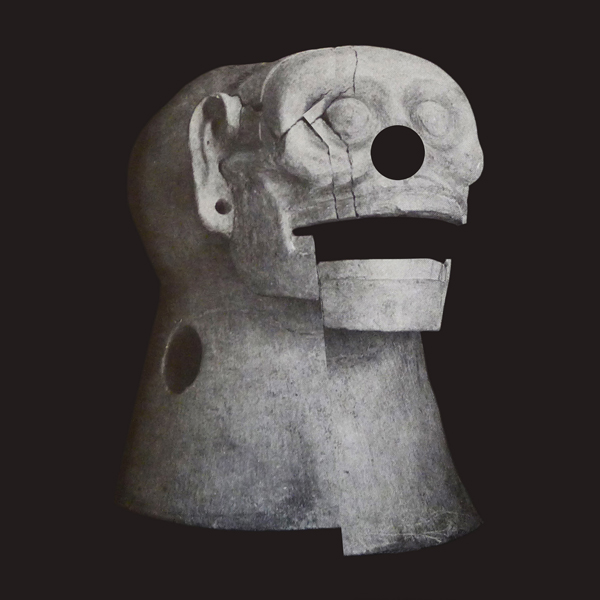
© » KADIST
Ana Roldán
Ana Roldán’s Displacements works use images taken from a 1970s exhibition catalogue for an exhibition called The Death in Mexico. Using pre-Columbian objects and other artifacts from Mexican history, the exhibition aimed to explore various representations of death in the Mexican cultural tradition. Roldán’s works begin with these rich black-and-white photographs and break them apart into fragments, slicing and dismembering the artifacts they depict.

© » KADIST
Imran Qureshi
At first glance, This Day by Imran Qureshi appears to be an energetic, gestural painting reminiscent of Action Painting from the mid-20th century. But upon closer inspection, highly detailed floral elements reveal themselves amongst the bold red brushstrokes. The botanical motifs in Qureshi’s work represent life and regeneration while the red paint refers to death and mortality.

© » KADIST
Rocky Cajigan
From the Ending by Rocky Cajigan consists of an assemblage painting, with accompanying sculptural objects presented on the floor. The bright pink object central to the painting is based on a photograph, and the artist’s personal memory, of a Bontoc ancestral tomb, commonly located at close proximity to a family home. The painting is covered by a net material simulating a fence, creating a certain bodily distance from the viewer’s perspective.

© » KADIST
Indira Allegra
Open Casket IX is an installation by Indira Allegra that combines traditional materials of memorial—tombstones, mausoleums, and caskets—with contemporary expressions of grief. The work is a memorial for people who have lost loved ones to police violence. It is part of Allegra’s Open Casket series, which is concerned with the need to recognize grieving as a collective responsibility, rather than an individual misfortune to be shouldered by one affected person or family.

© » KADIST
Santu Mofokeng
Mofokeng’s experiences during the turbulent time of the 1980s in South Africa led to a turn in his practice, opting to turn to the crowd, focusing on individual faces and bodies within the masses to tell a story of the collective resistance that is present in the daily life and surroundings of South African townships. “Miriam Maine’s funeral” urges the viewer to connect to the sadness that they are witnessing in the scene. Miriam Maine — the sister in law of Kas Maine a tenant farmer Mofokeng documented for historian Charles Van Onselen — was a respected member of the Bloemhof community.

© » KADIST
Li Binyuan
Freedom Farming presents how, after being given the right of farming, Li Binyuan began to re-dig his land. He attempted to physically open a space for conversation with the generation of his parents. On the second day, villagers that were gathering in the field, including his mother, started to watch a strange event: Li Binyuan’ s 2-hour long jumping and falling in his land until he finally stopped, exhausted.

© » KADIST
Lenka Clayton and Phillip Andrew Lewis
Five Hundred Twenty-Four, a single-channel video installation by Lenka Clayton and Phillip Andrew Lewis, features singers from over twenty Cleveland-area choirs counting numbers in an iterative process: one person sings “one”, then two people sing “two”, and so forth, to 524. Each choir was filmed separately, and the artists weave together the audio while the video features each choir individually. The juxtaposition of different contexts in which singing occurs functions as an embedded sociological study of various communities throughout the region.

© » KADIST
Rocky Cajigan
From the Beginning by Rocky Cajigan consists of an assemblage painting, with accompanying sculptural objects presented on the floor. The image in the painting is based on a photograph, and the artist’s personal memory, of a Bontoc ancestral tomb, commonly located at close proximity to a family home. The painting is covered by a net material simulating a fence, creating a certain bodily distance from the viewer’s perspective.

© » KADIST
Bady Dalloul
Bady Dalloul’s Scrapbook is a 48 minute video beginning from his birth, tracing major global events of the 20 th century, including the beginning and current Occupation and colonization of Palestine, the atomic bombings of Hiroshima and Nagasaki, assassination of family members and the Syrian diaspora. A voice over follows these moments as the camera traces over the collage that includes text; photos; postcards; origami birds; and inserted videos of world leaders. The film is a letter to the viewer, imploring the witnessing of what we assume, but cannot know, to be the artist speaking.

© » KADIST
Heecheon Kim
Lifting Barbells is a video by Kim Heecheon that narrates his letters in Spanish to his girlfriend in Argentina, discussing his feelings after his father died in a bicycling accident. Using the data recorded on his father’s smartwatch, Kim’s video traces digital footage of his father’s route on Google Maps, the location of the accident, and his cardiographic data as he was dying. The video contrasts Kim’s emotional letters with the clinicality of the quantitative data recordings.
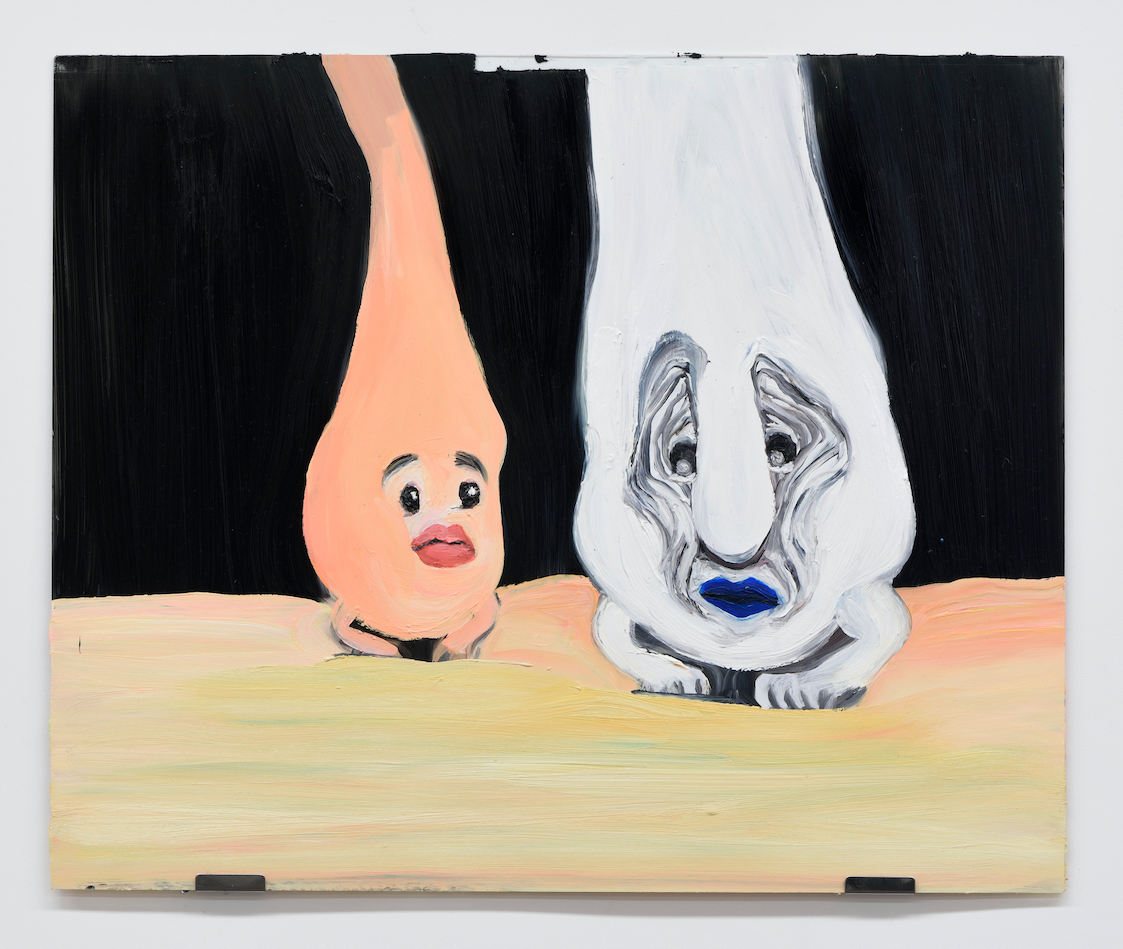
© » KADIST
Aki Kondo
Mogeji’s Journey (2014) depicts three hand painted stills from an animated sequence in Aki Kondo’s film Hikari (Light) (2015). Kondo’s film tells the story of a young woman named Juneko who discovers that she is terminally ill and the ways that this impacts her lover, a painter, who tries to reconnect with her by painting her portrait from memory. As Juneko becomes sicker, her hair begins to fall out, a symptom of her unnamed illness.

© » KADIST
Wang Mowen
In Trinity , Wang Mowen uses video to tell the story of a young woman who wants to know the whereabouts of a person born sixty years ago. She visits three fortune tellers and provides the person’s birth date. Each psychic deliberates and comes to the correct conclusion that the woman in question is the seeker’s mother.

© » KADIST
McCallum + Tarry
In Endurance, 26 homeless youths stand still looking directly into the camera for an hour without speaking. As each stands, the video is rendered with a time-lapsed effect in which traffic and pedestrians pass by and light fades into night and back again; during the transition from one youth/performer to the next, the video reverts into slow-time. The audio tracks on the video combine street sounds with edited sequences of the pre-recorded interviews.

© » KADIST
Wang Taocheng
Reflection Paper No. 2 is one of four videos in which Wang attempts to accurately illustrate the writings of influential Chinese Eileen Chang, who published her works during the Japanese occupation of China. Image and text reflect on the everyday experiences of women in society, family, marriage, love, and death.

© » KADIST
Oscar Munoz
In Ante la imagen (Before the Image, 2009) Muñoz continues to explore the power of a photograph to live up to the memory of a specific person. Since a photograph is fixed, it cannot encapsulate the spirit of someone who is gone. Muñoz etched onto the surface of a mirror an appropriated historical image, a daguerreotype from 1839.

© » KADIST
Ian Breakwell
“BC/AD” (Before Cancer, After Diagnoses) is a video of photographs of the artist’s face dating from early childhood to the month before he died, accompanied by the last diary entries he wrote from April 2004 to July 2005 (entitled “50 Reasons for Getting Out of Bed”), from the period from when he lost his voice, thinking he had laryngitis, through the moment he was diagnosed with lung cancer and the subsequent treatment that was ultimately, ineffective. The diary entries are at once poignant, ironic, laced with gallows of humor, with his continued eye for the little incidents in life, interweaving the past with his experience of the present. The morphing of the portraits—the eyes and sight remaining leveled—is haunting, beginning with very blurry images of childhood and ending with a pin-sharp photograph of Breakwell the month before he died.
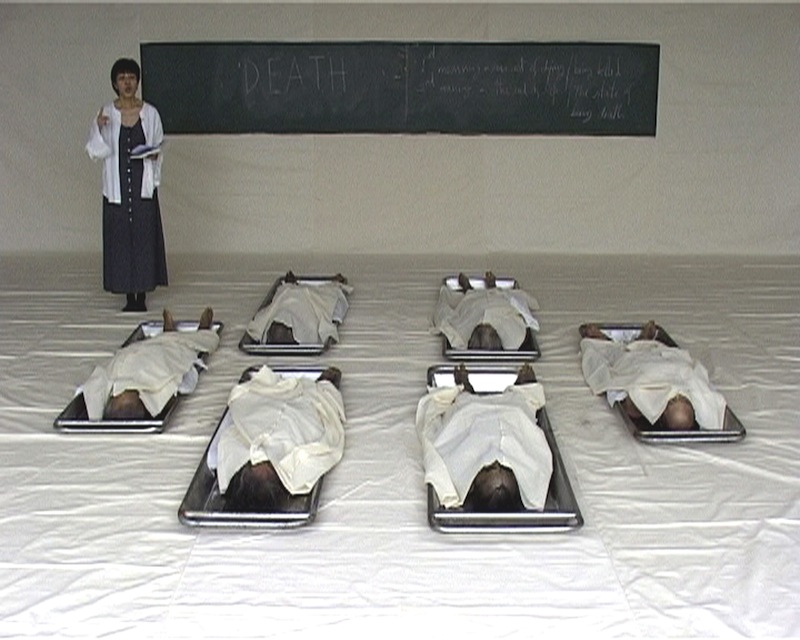
© » KADIST
Araya Rasdjarmrearnsook
The Class (2005) by Araya Rasdjarmrearnsook challenges the viewer’s personal sense of morality and tolerance by depicting a classroom from hell. In the video, a woman, dressed in black with a white over shirt, stands in front of a long blackboard. The classroom’s rear walls and floor are covered in taut white fabric, given the room the sinister appearance of a sanitarium or a crime scene.
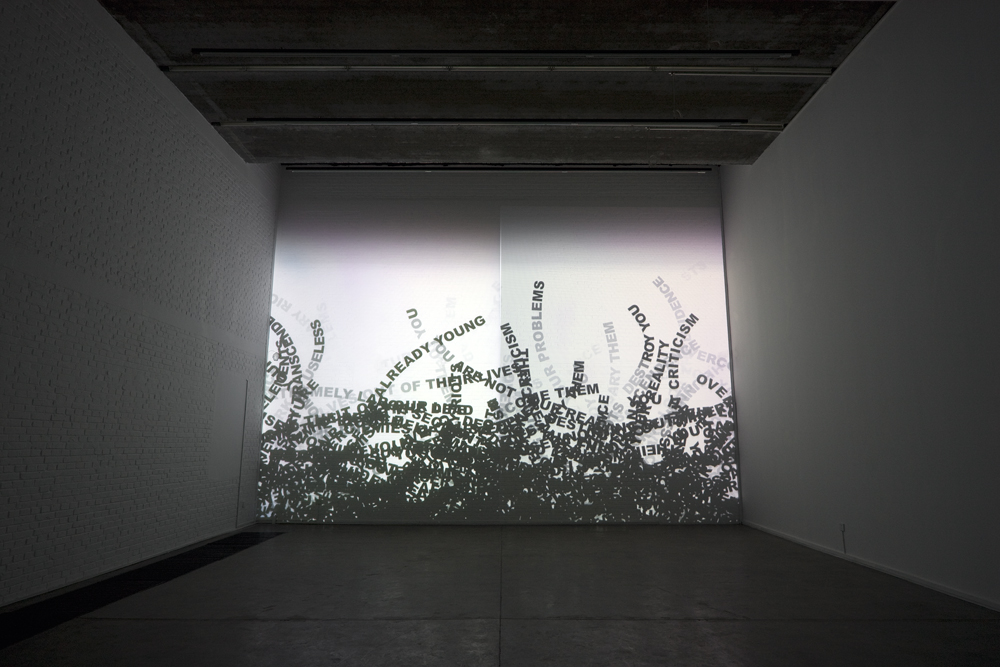
© » KADIST
Tsang Kin-Wah
The Third Seal—They Are Already Old. They Don’t Need To Exist Anymore is part of The Seven Seals , Tsang’s ongoing series of digital videos that are projected as installations onto the walls and ceilings of dark rooms. Using texts and computer technology, the series draws its reference from various sources—the Bible, Judeo-Christian eschatology, existentialism, metaphysics, politics, among others—to articulate the world’s complexity and the dilemmas that people face while approaching “the end of the world.” The Third Seal is a nineteen-by-twenty-seven-foot projection on a single wall that, together with sound, creates an immersive and dynamic environment.
Reza Aramesh
Working across a wide range of materials and processes, Aramesh examines simultaneously the history of Western art and contemporary commentary on the politics and history of the Middle East, concocting a unique visual language to address the contemporary conditions of violence and bio-politics...
Rocky Cajigan
Rocky Cajigan is a Bontoc Igorot artist working in the contemporary contexts of Indigenous people from the Cordilleras region in the northern state of Luzon island in the Philippines...
Voluspa Jarpa
Voluspa Jarpa’s work is based upon a meticulous analysis of political, historical, and social documents from Chile and other Latin American countries, which she uses to develop a reflection on the concept of memory...
Yang Song
Yang Song was trained as a sculptor in both Western and Eastern traditions, which continue to influence his practice today...
Tsang Kin-Wah
- location: Hong Kong, China
- year born: 1976
- gender: male
- nationality: Chinese
- home town: Shantou, Guangdong Province, China
Indira Allegra
Indira Allegra uses text and textile production—a combined material they designate as a “text/ile”—to embody unseen forces like memory, haunting, grief, and emotions born from trauma...
Bady Dalloul
Bady Dalloul cunningly employs collage across various media: texts, drawings, video, and objects to produce powerful works commenting on the past and the present...
Minouk Lim
- location: Seoul, South Korea
- year born: 1968
- gender: female
- nationality: Korean
Wang Mowen
Trained as a photographer, artist Wang Mowen was born and raised in Dalian and she currently lives and works in Beijing...
Eusebio Siosi
Eusebio Siosi is an artist from the Wayuu people in the Guajira Peninsula in Northern Colombia...
Du Zhenjun
- location: Paris, France
- location: Shanghai, China
- year born: 1961
- gender: male
- nationality: Chinese
- home town: Shanghai, China
Araya Rasdjarmrearnsook
- location: Chiang Mai, Thailand
- year born: 1957
- gender: female
- nationality: Thai
- home town: Trad, Thailand
Piotr Szyhalski
Polish born artist Piotr Szyhalski was originally trained as a poster designer...
Fredi Casco
Working with a variety of media such as drawing, painting and photography Fredi Casco frequently incorporates original documents and archives as a medium and support of his work in order to bring to light specific episodes of Paraguayan political history, particularly events that took place during the time of Alfredo Stroessner’s long dictatorship (1954 to 1989)...
Imran Qureshi
Pakistani artist Imran Qureshi’s practice revives 16th century Mughal miniature painting...
Jiang Zhi
- location: Beijing
- location: Shenzhen, China
- year born: 1971
- gender: male
- nationality: Chinese
- home town: Yuanjiang, China
Cerith Wyn Evans
- location: London, United Kingdom
- year born: 1958
- gender: male
- nationality: British
- home town: Llanelli, United Kingdom
Fabien Giraud & Raphael Siboni
The collaborative work of Fabien Giraud and Raphael Siboni is part of a reflection on the history of cinema, science, and technology...
Ian Breakwell
- location: Derby, United Kingdom
- year born: 1943
- gender: male
- nationality: British
Li Binyuan
Li Binyuan explores physicality, chance, play and social values through actions, film works and performances that intervene in the social fabric of everyday Chinese society...
Wang Taocheng
Wang Taocheng is a Shanghai artist who lives and works in Amsterdam...
Santu Mofokeng
The photographic artwork of Santu Mofokeng (b...
Lenka Clayton and Phillip Andrew Lewis
Lenka Clayton and Phillip Andrew Lewis’s collaborative practice is social at its core: it engages with and connects communities outside of the so-called art world in both production and presentation...
Aki Kondo
Aki Kondo utilizes animation, video, and mixed media to explore such varied topics as intimacy, loss, and the human body...
Will Rogan
- location: Albany, California
- year born: 1975
- gender: male
- nationality: American
Heecheon Kim
Kim Heecheon’s complex video installations are deeply rooted in his experiences, opening possibilities for a dual visual discourse that combines personal feelings, informed by his immediate surroundings, in a digitized global environment...
Cyprien Tokoudagba
Cyprien Tokoudagba self-taught drawing and cement sculpture before being noticed for his decorating skills...
Miljohn Ruperto
- location: Los Angeles, California
- year born: 1973
- gender: male
- nationality: Filipino and Danish
- home town: Manila, Philippines
Oscar Munoz
- location: Cali, Colombia
- year born: 1951
- gender: male
- nationality: Colombian
- home town: Popayán, Colombia
-
1990-1999
Santu Mofokeng
1990Mofokeng’s experiences during the turbulent time of the 1980s in South Africa led to a turn in his practice, opting to turn to the crowd, focusing on individual faces and bodies within the masses to tell a story of the collective resistance that is present in the daily life and surroundings of South African townships...
-
2000-2009
Michel François
Drawing & Print
2004(Drawing & Print) In Michel François’s work, « it is the real, physical and emotional experience that stimulates creation which is therefore highly charged with a vital force...
Araya Rasdjarmrearnsook
2005The Class (2005) by Araya Rasdjarmrearnsook challenges the viewer’s personal sense of morality and tolerance by depicting a classroom from hell...
Diana Fonseca Quiñones
2007In Los amantes (The lovers) Diana Fonseca Quiñones uses simple, commonplace objects and experiences that she derives from daily life to develop narratives that mix reality and fiction...
Ian Breakwell
2008“BC/AD” (Before Cancer, After Diagnoses) is a video of photographs of the artist’s face dating from early childhood to the month before he died, accompanied by the last diary entries he wrote from April 2004 to July 2005 (entitled “50 Reasons for Getting Out of Bed”), from the period from when he lost his voice, thinking he had laryngitis, through the moment he was diagnosed with lung cancer and the subsequent treatment that was ultimately, ineffective...
Cerith Wyn Evans
2008Untitled (Perfect Lovers + 1) by Cerith Wyn Evans takes as its starting point Felix Gonzales-Torres’s seminal work Untitled (Perfect Lovers) , in which two clocks were synchronized and left to run without interference, the implication being that one would stop before the other...
Oscar Munoz
2009In Ante la imagen (Before the Image, 2009) Muñoz continues to explore the power of a photograph to live up to the memory of a specific person...
-
2010-2019
Du Zhenjun
2010The Tower of Babel is an installation of large-format photographs that forces the audience to occupy a central position through its monumental scale...
Ana Roldán
2012Ana Roldán’s Displacements works use images taken from a 1970s exhibition catalogue for an exhibition called The Death in Mexico...
Minouk Lim
2012The Possibility of the Half by Minouk Lim is a two-channel video projection that begins with a mirror image of a weeping woman kneeling on the ground...
McCallum + Tarry
2013In Endurance, 26 homeless youths stand still looking directly into the camera for an hour without speaking...
Miljohn Ruperto
2013Miljohn Ruperto’s high-definition video Janus takes its name from the two-faced Roman god of duality and transitions, of beginnings and endings, gates and doorways...
Voluspa Jarpa
2014In her work, Fantasmática Latinoamericana, Jarpa works from photographs of five public funeral processions following the mysterious deaths of five Latin American presidents...
Li Binyuan
2014Freedom Farming presents how, after being given the right of farming, Li Binyuan began to re-dig his land...
Will Rogan
2014Will Rogan’s video Eraser (2014) shows a hearse parked in a clearing amidst leaf barren trees...
Jorge de León
2015Jorge de León most well-known work was a radical gesture, and one of his earliest artworks: in his 2000 performance, The Circle, de León sewed his own mouth closed as a protest against the silencing of citizens in the face of social corruption...
Bady Dalloul
2015Bady Dalloul’s Scrapbook is a 48 minute video beginning from his birth, tracing major global events of the 20 th century, including the beginning and current Occupation and colonization of Palestine, the atomic bombings of Hiroshima and Nagasaki, assassination of family members and the Syrian diaspora...
Heecheon Kim
2015Lifting Barbells is a video by Kim Heecheon that narrates his letters in Spanish to his girlfriend in Argentina, discussing his feelings after his father died in a bicycling accident...
Reza Aramesh
2016The photographed plaster heads set against the idyllic landscapes of the south of England, subvert the process of image production and memory...
Reza Aramesh
2016The photographed plaster heads set against the idyllic landscapes of the south of England, subvert the process of image production and memory...
Fabien Giraud & Raphael Siboni
2017– In whiche a lemyng starre returneth in the yeer foretolde and alle thing that spak to us turneth ayeyn to silence – Sixth episode of The Unmanned and sharing the same camera movements as the episode “1997 – The Brute Force”, “Mil troi cens quarante huyt” refers to the appearance of a comet in 1759 – thus validating the computation and rational prediction of its return by the British astronomer and mathematician Edmond Halley...
Fredi Casco
Drawing & Print
2017(Drawing & Print) Pascua Dolorosa (Painful Easter) by Fredi Casco is a series of drawings made on old worksheets documenting land surfaces in Caapucú, a forest exploitation area where one of the most violent episodes of the repression of Stroessner’s dictatorship took place in 1976, and during which peasants accused of belonging to insurgent movements were kidnapped, tortured and many of them killed...
Imran Qureshi
2017At first glance, This Day by Imran Qureshi appears to be an energetic, gestural painting reminiscent of Action Painting from the mid-20th century...
Rocky Cajigan
2017From the Ending by Rocky Cajigan consists of an assemblage painting, with accompanying sculptural objects presented on the floor...
Rocky Cajigan
2017From the Beginning by Rocky Cajigan consists of an assemblage painting, with accompanying sculptural objects presented on the floor...
Indira Allegra
2018Open Casket IX is an installation by Indira Allegra that combines traditional materials of memorial—tombstones, mausoleums, and caskets—with contemporary expressions of grief...
Wang Mowen
2019In Trinity , Wang Mowen uses video to tell the story of a young woman who wants to know the whereabouts of a person born sixty years ago...
-
2020-2029
Piotr Szyhalski
Drawing & Print
2020(Drawing & Print) The series of ink drawings and hand-lettered texts, titled COVID-19: Labor Camp Reports , were made and posted daily by artist Piotr Szyhalski on the @LaborCamp Instagram account, capturing the politically fraught Trump era and looking directly at some of the most painful aspects of life during COVID-19...
Eusebio Siosi
2022Jepira is a mythical and essential place of the spiritual dimension for the Wayuu people...
Lenka Clayton and Phillip Andrew Lewis
2022Five Hundred Twenty-Four, a single-channel video installation by Lenka Clayton and Phillip Andrew Lewis, features singers from over twenty Cleveland-area choirs counting numbers in an iterative process: one person sings “one”, then two people sing “two”, and so forth, to 524...



